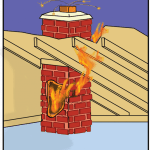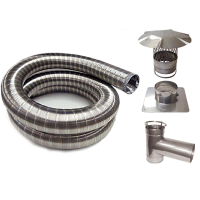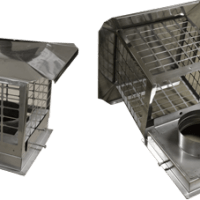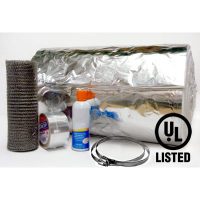An Overlooked Component
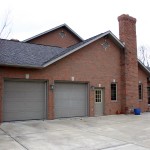
chimney exterior
If you’re like most homeowners, you don’t give much thought to your chimney. Unlike other things like your refrigerator, stove, heating system—it doesn’t make noise and doesn’t seem to require any attention. You may be aware that it needs to be cleaned periodically, but do you know how often? What does a proper, thorough cleaning consist of? Why should you be alert to deterioration, and how does it happen?
Home fires caused by malfunctioning chimneys are a reality. Health threats caused by leaking chimneys emitting dangerous gasses are also a danger. Your family’s safety and indeed their lives may be in jeopardy if you neglect this vital part of your home.
A chimney is not just a brick or stone contraption attached to your house. It has several different components and features that make it function properly. By design, it must be a certain height to provide “draw”. It will usually consist of a fascia, or outside structure that is the part you see. It could be brick or stone, and is designed to compliment your home’s exterior. Inside that fascia, is a liner. The liner is generally terracotta. Terracotta is red ceramic clay that will withstand high heat and is a good material for lining a chimney.
Terracotta liner comes in sections, with mortar between the joints. You may already be starting to understand that so many components can also mean increased potential for deterioration, wear, and ultimately failure of this important system. That’s not good.
You might liken your chimney to your car’s exhaust system. The exhaust system in a car is designed to move the byproduct of combustion out of the engine and safely dispel it into the atmosphere. You are probably aware that your exhaust system is subject to corrosion and in time it fails. You must then replace it. Your chimney does the same thing—it moves the byproducts of combustion out of your heating system and expels them into the atmosphere. A leaking, deteriorated chimney can be a real hazard. Why is that?
The by-products of combustion in your heating system produce smoke. This rises in your chimney and cools as it nears the top. What is also occurring near the top 1/3 of your chimney is very hot air colliding with cold air. This causes condensation. Water from condensation mixing with
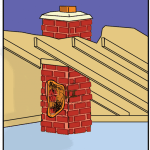
Deterioration of chimney liner
deposits on your chimney wall called creosote will form an acidic substance that eats away at your terracotta and the mortar between the joints. As crumbling and breakage begins to occur, the same condensation starts collecting in the voids. It may freeze and cause more cracking. You should be getting the picture by now.
You can appreciate the dynamics even more if you think of your house as a breathing creature. It may sound strange, but your house is constantly drawing air in and pushing it out. As hot air rises in your building, cold air is being drawn in from below. It will come in through cracks around doors and windows, from the space behind outlets—just about anywhere there’s an opening. Your chimney is doing the same thing. Hot air rising to the top actually creates a “pull”, drawing cold air from the bottom. This pulling action is called draft. Think of drinking from a straw.
So, here you have this constant force pumping air up through your chimney. Condensation is forming. Deposits are sticking to the walls of your liner. It’s becoming acidic and eating into the terracotta and the mortar. Don’t think YOUR heating system is immune—it happens with all heat sources. The end result could be a chimney fire and a house fire.
If you’re using an alternate heat source such as wood, you should be aware that the risk is even greater for creosote build up and deterioration.
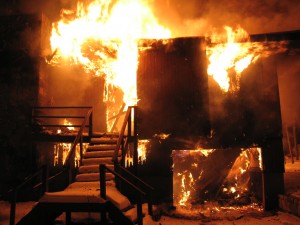
Don't let this happen to your home

